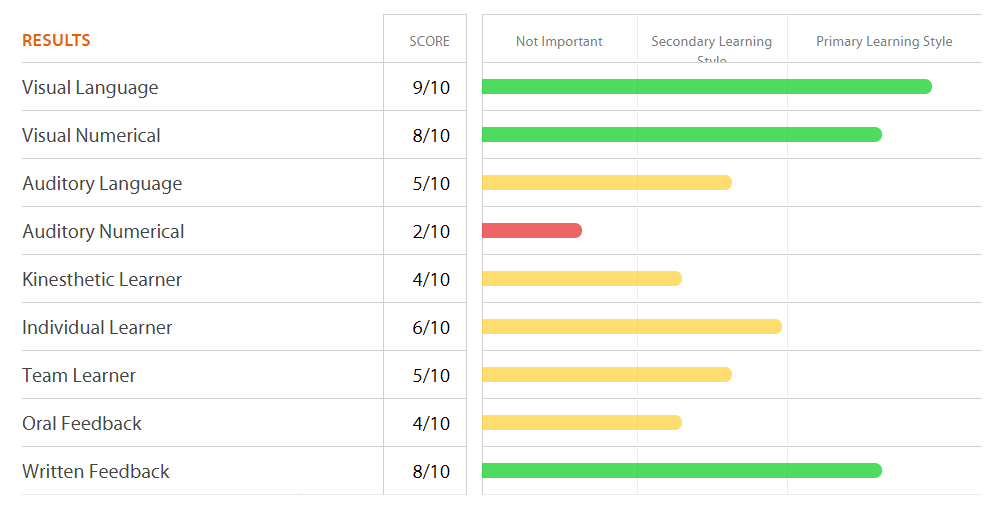Learning
The Learning program is designed to identify the primary and secondary learning styles.
• Determining the personal cognitive learning preferences—The Cognitive Map
Assessments
The Cognitive Map—all behavior is learned just like anything else. However, there is no right or wrong way to learn. The Cognitive Map will help learners to sort out how they learn best so that new behaviors can be learned and habits can be changed. Knowing one’s preference of learning greatly enhances the ability to learn.

The scales from the assessment are:
• VISUAL LANGUAGE—an ability to learn most effectively when the learning is presented in a print form.
• VISUAL NUMERICAL—an ability to learn when numbers are presented on paper.
• AUDITORY LANGUAGE—an ability to learn from the spoken word.
• AUDITORY NUMERICAL—an ability to learn from numbers given in an oral form.
• KINESTHETIC LEARNER—an ability to learn best by experience, doing, or self-involvement.
• INDIVIDUAL LEARNER—an ability to learn by doing work and to receive instructions by oneself without assistance from others.
• TEAM LEARNER—an ability to learn by doing work and to receive instructions as part of a team.
• ORAL FEEDBACK—an ability to learn effectively by giving feedback and by talking to others.
• WRITTEN FEEDBACK—an ability to learn by writing things down and putting thoughts on paper.
